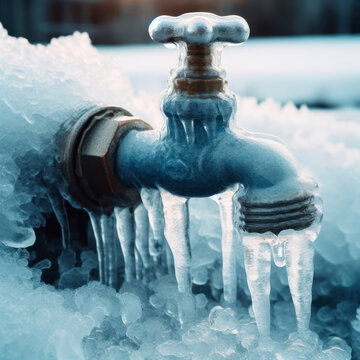Were you interested in information concerning Preventing and dealing with frozen pipes?

Winter can damage your plumbing, specifically by freezing pipes. Below's just how to prevent it from happening and what to do if it does.
Introduction
As temperatures decline, the threat of icy pipelines boosts, possibly leading to pricey repair services and water damages. Recognizing how to stop frozen pipelines is vital for property owners in cool environments.
Understanding Icy Pipelines
What triggers pipes to freeze?
Pipelines ice up when subjected to temperature levels below 32 ° F (0 ° C) for expanded durations. As water inside the pipelines freezes, it expands, putting pressure on the pipe walls and possibly creating them to break.
Threats and damages
Frozen pipelines can result in water supply disruptions, residential property damages, and expensive fixings. Burst pipes can flood homes and create comprehensive structural damages.
Indicators of Frozen Pipes
Determining icy pipelines early can stop them from rupturing.
Just how to recognize icy pipelines
Look for lowered water flow from faucets, uncommon smells or noises from pipelines, and noticeable frost on revealed pipelines.
Avoidance Tips
Insulating vulnerable pipelines
Cover pipelines in insulation sleeves or use heat tape to shield them from freezing temperature levels. Focus on pipelines in unheated or outside locations of the home.
Heating strategies
Keep indoor areas effectively heated, specifically areas with pipes. Open up cupboard doors to permit warm air to circulate around pipelines under sinks.
Protecting Outside Pipes
Garden tubes and outside taps
Separate and drain garden pipes before wintertime. Install frost-proof spigots or cover outside taps with shielded caps.
What to Do If Your Pipelines Freeze
Immediate actions to take
If you think frozen pipes, keep taps available to soothe pressure as the ice melts. Utilize a hairdryer or towels taken in warm water to thaw pipelines slowly.
Long-Term Solutions
Architectural adjustments
Take into consideration rerouting pipelines far from outside walls or unheated areas. Add extra insulation to attics, basements, and crawl spaces.
Upgrading insulation
Buy high-grade insulation for pipes, attics, and wall surfaces. Proper insulation aids preserve consistent temperatures and lowers the danger of icy pipelines.
Verdict
Preventing frozen pipelines needs aggressive procedures and fast feedbacks. By understanding the causes, indications, and safety nets, property owners can secure their pipes during cold weather.
6 Proven Ways to Prevent Frozen Pipes and Protect Your Home
Disconnect and Drain Garden Hoses
Before winter arrives, start by disconnecting your garden hoses and draining any remaining water. Close the shut-off valves that supply outdoor hose bibs and leave the outdoor faucet open to allow any residual water to drain. For extra protection, consider using faucet covers throughout the colder months. It’s also important to drain water from any sprinkler supply lines following the manufacturer’s directions.
Insulate Exposed Pipes
Insulating your pipes is an effective way to prevent freezing. Pipe insulation is readily available at home improvement stores and is relatively inexpensive. Pay close attention to pipes in unheated areas such as the attic, basement, crawl spaces, or garage. Apply foam insulation generously to create a buffer against the cold. You can also wrap your pipes in heat tape or thermostat-controlled heat cables for added warmth.
Seal Air Leaks
Inspect your home for any cracks or openings that could let in cold air. Seal any holes around the piping in interior or exterior walls, as well as the sill plates where your home rests on its foundation. Additionally, make sure to keep your garage door closed unless you’re entering or exiting. Leaving it open creates a significant air leak that can lead to frozen pipes.
Allow Warm Air Circulation
During cold snaps, it’s essential to allow warm air to circulate evenly throughout your home. Leave interior doors ajar to promote better airflow. Open kitchen and bathroom cabinets to help distribute heat consistently around the rooms. If you have small children or pets, be sure to remove any household chemicals or potentially harmful cleaners from open cabinets for safety.
Let Faucets Drip
A small trickle of water can make a big difference in preventing ice formation inside your pipes. When temperatures drop significantly, start a drip of water from all faucets served by exposed pipes. This continuous flow helps prevent the water from freezing. Additionally, running a few faucets slightly can relieve pressure inside the pipes, reducing the chances of a rupture if the water inside does freeze.
https://choateshvac.com/6-proven-ways-to-prevent-frozen-pipes-and-protect-your-home/

As a passionate person who reads about Prevent Frozen Pipes , I assumed sharing that piece of content was important. Liked our blog entry? Please share it. Help somebody else check it out. Bless you for being here. Kindly check up our site back soon.
Browse Website